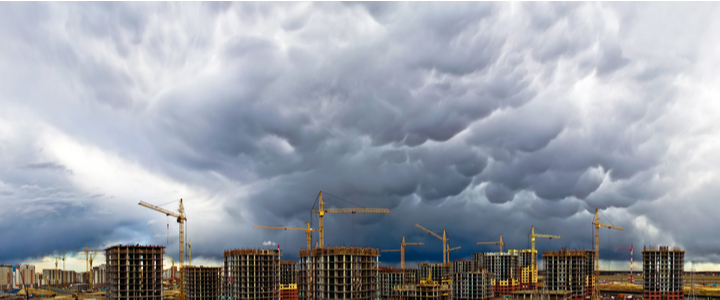Severe weather can strike at any time and place, even at the workplace. But do your managers and employees know what to do during a storm? A severe weather safety plan is something every business should have in place. It is also an OSHA requirement.
If you haven’t created a plan for your employees, here are some severe weather safety tips you want to include on your list.
Severe Weather Safety: Your Business Is On The Line
OSHA (Occupational Safety and Health Administration) requirement 1910.38 states that employers must have a severe weather safety plan to protect employees. Having the program in place before powerful weather strikes is vital for everyone’s workplace safety. Here are some storm safety tips businesses should consider including in their plans.
Workplace Hazards Associated with Adverse Weather Conditions
Severe weather safety starts by recognizing the various threats inherent in most workplaces.
- Being struck by lightning
- Electrocution
- Slipping and tripping
- Floods
- Drowning
- Loss of balance
- Being unable to leave a job site
- Falls and related workplace injuries
- Falling objects
Winter storm safety tips should apply to where employees are working. It often includes staying safe on scaffolding, and open spaces, working with electrical equipment and heavy machinery, and working in confined spaces or excavating.

Safety Tips for Protecting Workers During Severe Weather Conditions
Here are some tips on what to include in your workplace safety plan.
1. Prepare a Written Emergency Action Plan
Preparing an emergency action plan requires considering all potential severe weather emergencies. For example, tornadoes are common in the midwest, and hurricanes are a threat along the gulf coast, which case a construction hurricane safety plan is necessary. Other regions want to include winter storm safety tips, including how to manage ice and heavy snowfall.
2. Designate Emergency Exit Routes
All employees must know where the emergency exits are in the facility. OSHA requires these exits to be marked. Your safety plan should also cover routes from every corner of the building.
3. Install Emergency Alarm System
OSHA requires all businesses to install audible emergency systems. Some facilities may also need a visible alarm to alert employees when severe weather is threatening. It’s a good idea to designate an employee on each shift to take charge of turning on the alert system if it is not automated.
4. Stock up on Equipment
Stocking up in the event of a severe weather event will help keep employees safe if they are stranded at work for several days. Some of the equipment you want to keep on hand include,
- First aid kits
- Supply of water and food – enough to last each employee three days
- Flashlights and batteries
- NOAA weather radio
- Solar-powered phone charger
- Tools to shut off utilities or make minor repairs
- Personal hygiene items
- Masks, sheeting, and duct tape
5. Provide Proper Personal Protective Gear
Cleaning up after severe weather can present hazards for employees. Therefore, your emergency response and safety plan should include providing your personnel with the proper protective gear.
Employees also need to be trained in OSHA safe practices, including working around downed electrical lines and hazards from flooding. Think about the potential risks your employees may face and ensure they have the right gear to continue keeping them safe.
6. Designate Safe Spaces
Designating safe places for employees and visitors to go is a severe weather safety tip recommended by the American Red Cross. Known as a shelter-in-place location, it must be located in an area without glass doors or windows—for example, a basement or cellar in the event of a tornado.
7. Have a Post-Disaster Plan
A vital severe weather safety tip for work is to have a post-disaster plan. You want your employees to stay calm, whether it’s a tornado, snowstorm, or hurricane. A recovery plan gives everyone something to focus on instead of the destruction left by the storm.
Prepare for Severe Weather with Safety Training
Preparing for severe weather is crucial for the safety of your employees. It is also an OSHA requirement. To ensure you do not omit a critical detail from your safety plan, investing in some training is a good idea.
Whether you are interested in workplace injury prevention training or have questions about your safety plan, contact Safety by Design today to learn more about their services.



